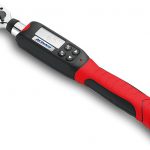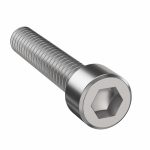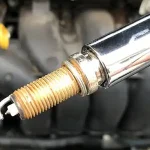With bolted joints, the most typical method of achieving fastener preload is to torque them. Torquing creates this load by applying rotational force to the head of a nut or bolt.
This is the most straightforward method of achieving axial load. Bolt torque may be achieved through a manual “clicker” torque wrench, pistol grip torque wrench, or a hydraulic torque wrench.
In this article, you will learn the process of torquing bolts, the use of compounds in torquing bolts, and torquing bolts in exceptional cases.
Process of Torquing Bolts
A torque wrench is required to correctly set the torque on a nut or bolt. Although the nuts or bolts fashion from metal, they’re meant to stretch as they’re tightened. When a precise amount of torque applies to the connection, bolts physically extend, thus ensuring a tight connection.
Torque applies to fasteners in the car’s engine, compressors, pumps, and nearly every conceivable industrial product. The correct application of torque is essential to the fastener’s success in its intended application.
Have the proper torque wrench.
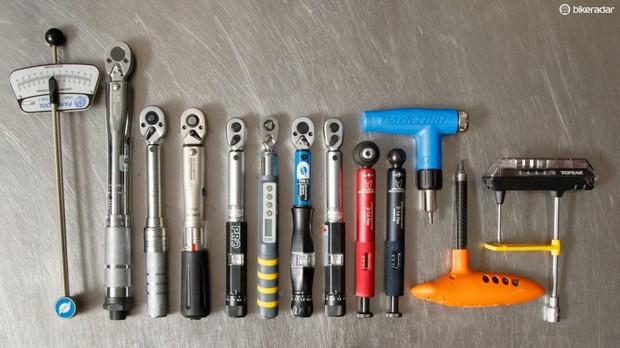
First, determine the appropriate torque specification for the subject connection. In most cases, the manufacturer will provide these specifications and make them available in repair or owner’s manuals. The measurement system might be in foot-pounds force, inch-pounds, or metric equivalents. Make sure you have the proper torque wrench for the job.
Set your torque wrench to the specified torque.
On most modern torque wrenches, the torque is set by turning the wrench’s handle until the top edge lines up with a mark on the barrel of the wrench. Because the torque wrench may be marked in both standard and metric units, double-check the scale you’re using, or you’ll under/over-torque the bolt.
Install an appropriate-size socket on the torque wrench to fit the fastener.
As you would with a ratchet, snap the socket onto the square drive of the torque wrench. Because applying torque to a fastener can damage or strip it, make sure the socket fits the fastener appropriately.
Last step: Tighten the bolt.
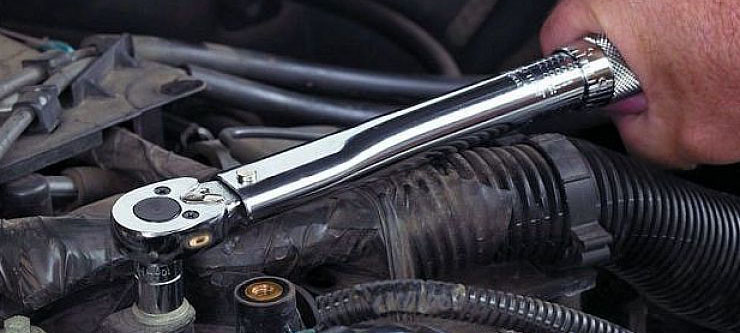
Tighten the bolt with socket and torque wrench while holding the torque wrench by the handle at the end of the wrench. Continue to rotate the torque wrench gently and evenly through the arc until it clicks. When you hear a click, you’ve obtained the desired torque.
Modern digital torque wrenches may provide an additional buzz, vibration, or digital signal that the connection has achieved the desired torque. In most cases, after reaching the desired torque, users can no longer torque the connection, thus preventing overtorque.
Using Compounds While Torquing Bolts
Loctite
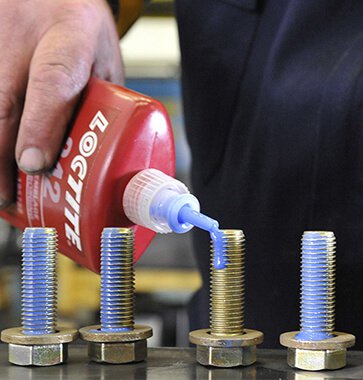
A thread-locking fluid, also known as a thread locker, is a thin, one-component glue applied to fasteners’ threads like screws and bolts to keep them from loosening, leaking, and rusting. The difference between red and blue thread lockers is a matter of strength and removability.
When Loctite thread lockers are used on a bolt and the nut tightens, the liquid covers the microscopic gap between the nuts and bolts and unites them against loosening.
When using Loctite, ensure it only contacts metal parts as it can degrade plastic material easily.
Anti-Seize
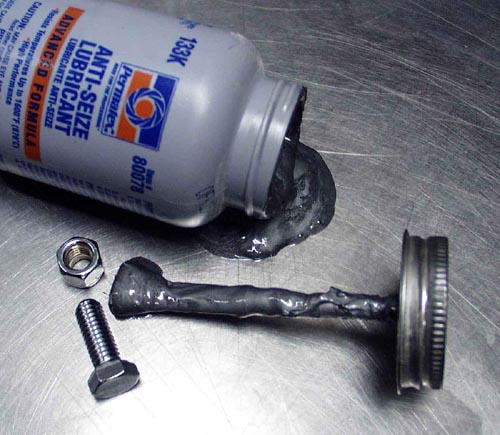
Anti-seize contains a high solids content and a carrier grease to convert torque to tightening force more efficiently. Anti-seize can handle heavy load applications while still providing lubrication and friction reduction due to its high solids content.
Bolts, fasteners, flanges, and other clamped interfaces lubricate with anti-seize materials to avoid galling, seizing, and corrosion and make disassembly easier.
However, do not apply anti-seize to already damaged or cross-threaded threads of bolts. The lines require chasing, re-tapping, or repairing before applying anti-seize. Don’t use anti-seize on exposed threads as it may attract contaminants that may contribute to thread damage.
Torquing Bolts in Specific Scenarios
Torquing Bolts in Cold Weather
Aluminum expands/contracts more than steel when the temperature changes. If it’s freezing, then the aluminum will have contracted more than the steel bolts. This scenario introduces unexpected stresses and the possibility of brittle fracture when the aluminum warms up. Ideally, operators should not torque bolts in freezing weather. If the situation cannot be avoided, contact the original manufacturer for proper instruction.

On the other hand, when storing a wrench in freezing temperatures, there will be a risk of developing condensation that can cause the internals to rust. This affects the accuracy and performance of the tool. Temperatures exceeding 120 degrees, meanwhile, will cause the grease inside the wrench to melt and seep out, affecting performance and accuracy.
Torquing Bolts in Tight Spaces
Conventional torque wrenches generally feature a large engagement head. This added bulkiness makes it hard to engage in tight spaces.
For situations like this, break-over wrenches are the best torque wrenches to use. Break-over torque wrenches are similar in appearance to regular manual wrenches. They have an open-ended, box, or spigot head instead of a ratcheting head. Because these heads are generally flat, they do not require the same amount of space clearance to tighten a fastener. These heads also swap out, giving a break-over wrench a lot of versatility.
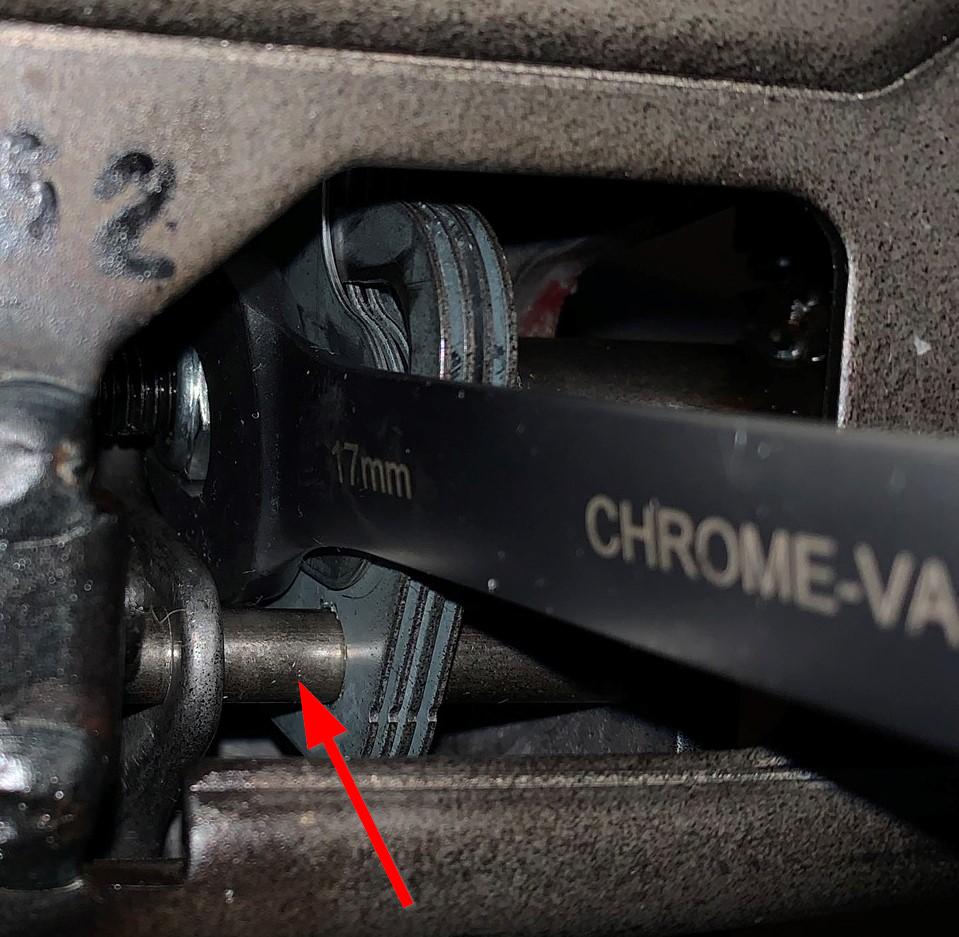
Torquing Bolts in a Star Pattern
While torquing patterns may vary, the star pattern generally provides a safe and effective way to torque connections. The star pattern sequence works for pipe flanges on ASME B16.5 and ASME B16.47 flanges (NPS 26 inches and above), heat exchangers, and other applications like butterfly valves.
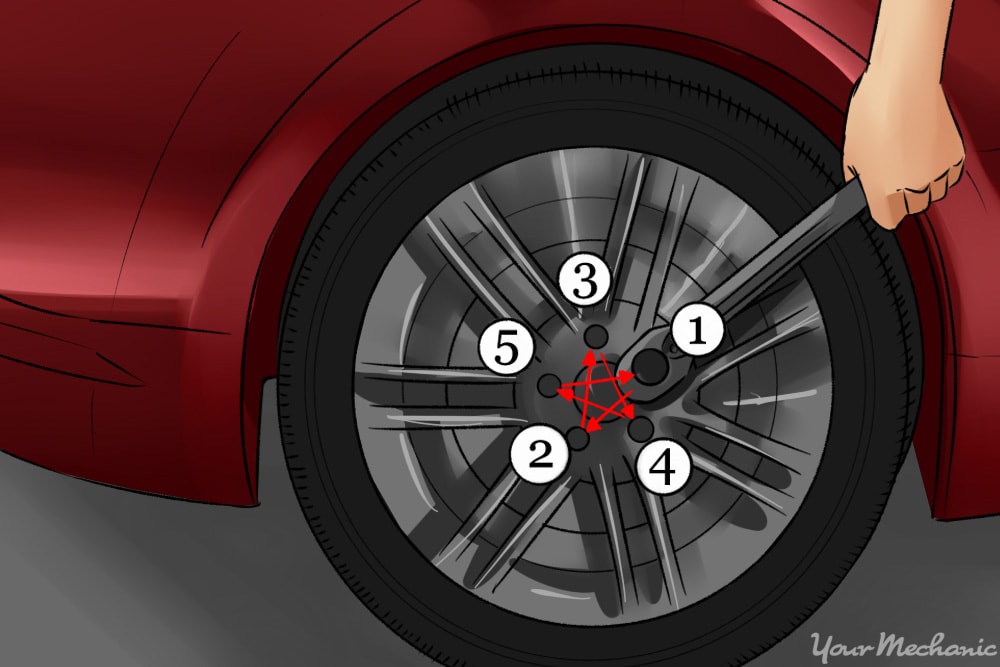
Starting at a top dead center, tighten the first bolt until a light amount of torques applies. Going clockwise or counterclockwise, skip the next bolt and repeat the process. Once a light amount of torque applies to all connections, gradually apply more torque to each connection until specifications are reached.
Torquing Bolts without a Torque Wrench
Trying to guess at torque or use a rule of thumb does not provide good results. Any serious work on an engine or industrial connection requires a torque wrench. Shortcutting this process may reuslt in catastrophic failure. Overtightening cylinder-head bolts, for example, can swiftly cause costly damage and catastrophic coolant loss. Overly tight exhaust manifold bolts might cause the manifold to break.
So, if you don’t have a torque wrench … borrow one.
